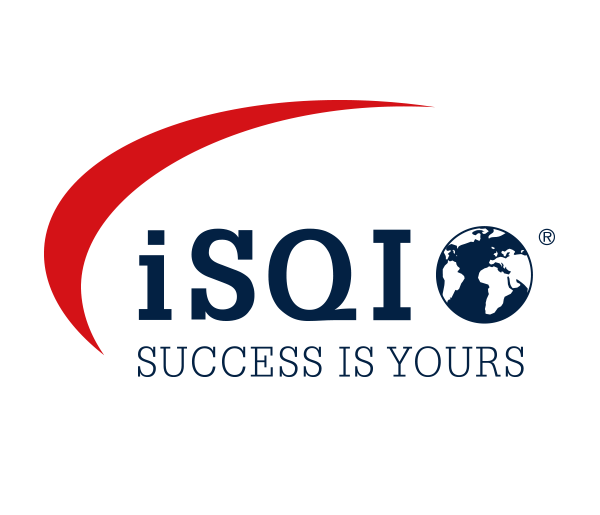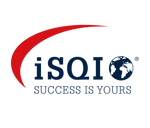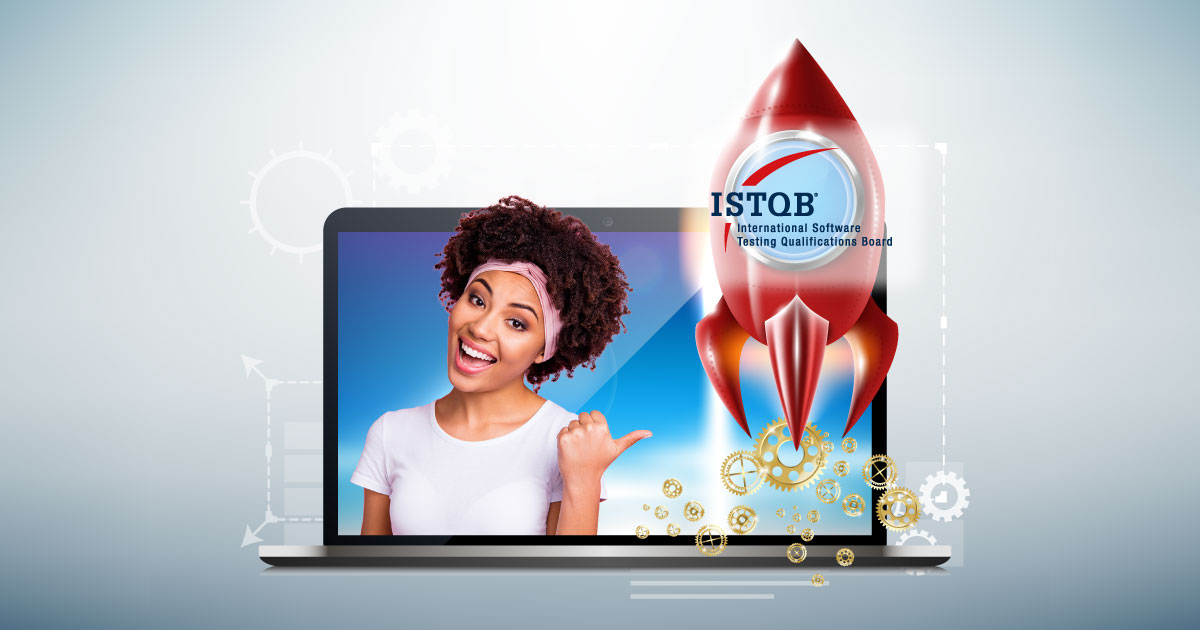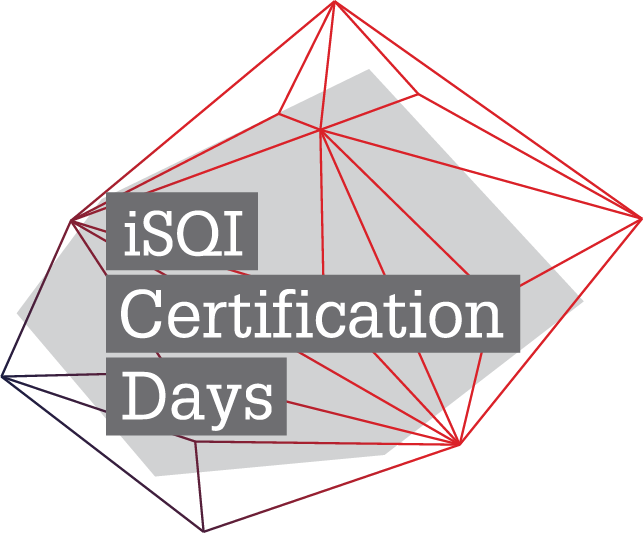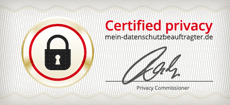Accelerate your professional software testing career with the ISTQB Certified Tester Foundation Level (CTFL) certification, the core building block for the International Software Testing Qualifications Board (ISTQB) Certified Tester Scheme – the recognised career path for testing professionals.
iSQI will help make your first step towards ISTQB certification with free resources available to download on our website. The ISTQB CTFL syllabus and mock exams can help you to prepare for your ISTQB CTFL certification exam. You can also choose to take an accredited software testing training course with an ISTQB accredited training provider (classroom, virtual live on-line, and e-learning). The ISTQB Foundation exam booking process is easy with iSQI and we offer you multiple options to take your CTFL test. CTFL certification is currently based on the 2018 Foundation Level syllabus.
Contents
Who is the ISTQB Certified Tester Foundation Level certification for?
The ISTQB CTFL foundation level qualification is suitable for anyone who would like to demonstrate practical knowledge of the fundamental concepts of software testing, such as:
- Software testers
- Test analysts
- Test engineers
- Test consultants
- Test managers
- User acceptance testers
- Software developers
It is also suitable for anyone who wants a basic understanding of software testing including project managers, quality managers, software development managers, business analysts, IT directors, and management consultants.
The ISTQB Foundation Level certification is relevant across software delivery practices including Waterfall, Agile, DevOps, and Continuous Delivery.
The ISTQB CTFL certification is included in the “Core” ISTQB stream and it is a prerequisite for all other ISTQB Foundation Level and Advanced Level certifications in all Core, Agile, and Specialist streams (see the ISTQB Roadmap later in this blog).
We are often asked whether the current 2018 syllabus is the only accepted prerequisite; any ISTQB CTFL qualification can be submitted as a valid prerequisite currently (including the 2011 syllabus and any “grandfathered” Foundation Level certifications such as the ISEB BCS Software Testing Foundation Syllabus V2.0).
You can also take an exam with iSQI if you hold a Foundation level certification issued by another exam provider or any local ISTQB Member Board.
Note: for ISTQB Advanced Level Agile Technical Tester the ISTQB Foundation Level Agile Tester is also a prerequisite.
What is the structure of the ISTQB Foundation Level Syllabus?
The ISTQB CTFL syllabus has been developed by an ISTQB working group according to the general guidelines on syllabus development. The syllabus was developed in English and then localised into other languages (English, Spanish and Germaabout K Levels in the exam latern are available at https://isqi.org/en/14-istqb-certified-tester-foundation-level.html).
The ISTQB CTFL syllabus includes:
- Business Objectives (BOs): these attest to what an individual holding the CTFL certification should be able to do.
- Learning Objectives (LOs): statements that describe what the candidate is expected to know or be able to do after mastering the syllabus content. Learning Objectives are defined for each syllabus section. Each Learning Objective references one K-Level. The Learning Objectives support Business Outcomes.
- You can find the traceability matrix between the CTFL Learning Objectives and CTFL Business Objectives in section 2.3 in the ISTQB Foundation Level 2018 Overview.
- K-Levels: Each Learning Objective (and question) is classified according to the cognitive level, known as the K-Levels (level of knowledge).
The ISTQB CTFL exam covers 3 different K-levels (K1 to K3):
- K1 (Remember): The candidate should remember or recognize a term or a concept. There are 15 K1 Level LOs in the CTFL syllabus
- K2 (Understand): The candidate should select an explanation for a statement related to the question topic. There are 40 K2 Level LOs in the CTFL syllabus
- K3 (Apply): The candidate should select the correct application of a concept or technique and apply it in a given context. There are 7 K3 Level LOs in the CTFL syllabus
We have given more information about K Levels in the exam later.
Note: All keywords (as below) in each chapter of the syllabus are examinable for their definition (K1) – these are listed just below the Chapter headings in the syllabus.
1. Fundamentals of Testing
Keywords: coverage, debugging, defect, error, failure, quality, quality assurance, root cause, test analysis, test basis, test case, test completion, test condition, test control, test data, test design, test execution, test implementation, test monitoring, test object, test objective, test oracle, test planning, test procedure, test process, test suite, testing, testware, traceability, validation, verification
2. Testing Throughout the Software Development Lifecycle
Keywords: acceptance testing, alpha testing, beta testing, change-related testing, commercial off-the-shelf (COTS), component integration testing, component testing, confirmation testing, contractual acceptance testing, functional testing, impact analysis, integration testing, maintenance testing, non-functional testing, operational acceptance testing, regression testing, regulatory acceptance testing, sequential development model, system integration testing, system testing, test basis, test case, test environment, test level, test object, test objective, test type, user acceptance testing, white-box testing
3. Static Testing
Keywords: ad hoc review, checklist-based review, dynamic testing, formal review, informal review, inspection, perspective-based reading, review, role-based review, scenario-based review, static analysis, static testing, technical review, walkthrough
4. Test Techniques
Keywords: black-box test technique, boundary value analysis, checklist-based testing, coverage, decision coverage, decision table testing, error guessing, equivalence partitioning, experience-based test technique, exploratory testing, state transition testing, statement coverage, test technique, use case testing, whitebox test technique
5. Test Management
Keywords: configuration management, defect management, defect report, entry criteria, exit criteria, product risk, project risk, risk, risk level, risk-based testing, test approach, test control, test estimation, test manager, test monitoring, test plan, test planning, test progress report, test strategy, test summary report, tester
6. Tool Support for Testing
Keywords: data-driven testing, keyword-driven testing, test automation, test execution tool, test management tool
Hint: There are standards referenced in the Foundation Syllabus (e.g., (IEEE, ISO, etc.). The purpose of these references is to provide a framework (as in the references to ISO 25010 regarding quality characteristics) or to provide a source of additional information if desired by the reader. The syllabus is using the standard documents as references. The standards documents are not intended for examination.
What does the ISTQB Certified Tester Foundation Level cover?
 Learning Objectives
Learning Objectives
There are 62 Learning Objectives in the 2018 CTFL syllabus as follows:
Chapter 1 Fundamentals of Testing
1.1 What is Testing?
LO-1.1.1 Identify typical objectives of testing (K1)
LO-1.1.2 Differentiate testing from debugging (K2)
1.2 Why is Testing Necessary?
LO-1.2.1 Give examples of why testing is necessary (K2)
LO-1.2.2 Describe the relationship between testing and quality assurance and give examples of how testing contributes to higher quality (K2)
LO-1.2.3 Distinguish between error, defect, and failure (K2)
LO-1.2.4 Distinguish between the root cause of a defect and its effects (K2)
1.3 Seven Testing Principles (K2)
LO-1.3.1 Explain the seven principles of testing (K2)
1.4 Test Process
LO-1.4.1 Explain the impact of context on the test process (K2)
LO-1.4.2 Describe the test activities and respective tasks within the test process (K2)
LO-1.4.3 Differentiate the work products that support the test process (K2)
LO-1.4.4 Explain the value of maintaining traceability between the test basis and the test work products (K2)
1.5 The Psychology of Testing (K2)
LO-1.5.1 Identify the psychological factors that influence the success of testing (K1)
LO-1.5.2 Explain the difference between the mindset required for test activities and the mindset required for development activities (K2)
Chapter 2 Testing Throughout the Software Development Lifecycle
2.1. Software Development Lifecycle Models
LO-2.1.1 Explain the relationships between software development activities and test activities in the software development lifecycle (K2)
LO-2.1.2 Identify reasons why software development lifecycle models must be adapted to the context of project and product characteristics (K1)
LO-2.1.3 Recall characteristics of good testing that are applicable to any life cycle model (K1)
2.2 Test Levels (K2)
LO-2.2.1 Compare the different test levels from the perspective of objectives, test basis, test objects, typical defects and failures, and approaches and responsibilities (K2)
2.3 Test Types (K2)
LO-2.3.1 Compare functional, non-functional and white-box testing (K2)
LO-2.3.2 Recognize that functional and structural tests occur at any test level (K1)
LO-2.3.3 Recognize that functional, non-functional and white-box tests occur at any test level (K1)
LO-2.3.4 Compare the purposes of confirmation testing and regression testing (K2)
2.4 Maintenance Testing (K2)
LO-2.4.1 Summarize triggers for maintenance testing (K2)
LO-2.4.2 Describe the role of impact analysis in maintenance testing (K2)
LO-2.4.3 Describe the role of impact analysis in maintenance testing (K2)
Chapter 3 Static Testing
3.1 Static Testing Basics
LO-3.1.1 Recognize types of software work product that can be examined by the different static testing techniques (K1)
LO-3.1.2 Use examples to describe the value of static testing (K2)
LO-3.1.3 Explain the difference between static and dynamic techniques, considering objectives, types of defects to be identified, and the role of these techniques within the software lifecycle (K2)
3.2 Review Process
LO-3.2.1 Summarize the activities of the work product review process (K2)
LO-3.2.2 Recognize the different roles and responsibilities in a formal review (K1)
LO-3.2.3 Explain the differences between different review types: informal review, walkthrough, technical review and inspection (K2)
LO-3.2.4 Apply a review technique to a work product to find defects (K3)
LO-3.2.5 Explain the factors that contribute to a successful review (K2)
Chapter 4 Test Techniques
4.1 Categories of Test Techniques
LO-4.1.1 Explain the characteristics, commonalities, and differences between black-box test techniques, white-box test techniques and experience-based test techniques (K2)
4.2 Black-box Test Techniques
LO-4.2.1 Apply equivalence partitioning to derive test cases from given requirements (K3)
LO-4.2.2 Apply boundary value analysis to derive test cases from given requirements (K3)
LO-4.2.3 Apply decision table testing to derive test cases from given requirements (K3)
LO-4.2.4 Apply state transition testing to derive test cases from given requirements (K3)
LO-4.2.5 Explain how to derive test cases from a use case (K2)
4.3 White-box Test Techniques
LO-4.3.1 Explain statement coverage (K2)
LO-4.3.2 Explain decision coverage (K2)
LO-4.3.3 Explain the value of statement and decision coverage (K2)
4.4 Experience-based Test Techniques
LO-4.4.1 Explain error guessing (K2)
LO-4.4.2 Explain exploratory testing (K2)
LO-4.4.3 Explain checklist-based testing (K2)
Chapter 5 Test Management
5.1 Test Organization
LO-5.1.1 Explain the benefits and drawbacks of independent testing (K2)
LO-5.1.2 Identify the tasks of a test manager and tester (K1)
5.2 Test Planning and Estimation
LO-5.2.1 Summarize the purpose and content of a test plan (K2)
LO-5.2.2 Differentiate between various test approaches (K2)
LO-5.2.3 Give examples of potential entry and exit criteria (K2)
LO-5.2.4 Apply knowledge of prioritization, and technical and logical dependencies, to schedule test execution for a given set of test cases (K3)
LO-5.2.5 Identify factors that influence the effort related to testing (K1)
LO-5.2.6 Explain the difference between two estimation techniques: the metrics-based technique and the expert-based technique (K2)
5.3 Test Monitoring and Control
LO-5.3.1 Recall metrics used for testing (K1)
LO-5.3.2 Summarize the purposes, contents, and audiences for test reports (K2)
5.4 Configuration Management
LO-5.4.1 Summarize how configuration management supports testing (K2)
5.5 Risks and Testing
LO-5.5.1 Define risk level by using likelihood and impact (K1)
LO-5.5.2 Distinguish between project and product risks (K2)
LO-5.5.3 Describe, by using examples, how product risk analysis may influence thoroughness and scope of testing (K2)
5.6 Defect Management
LO-5.6.1 Write a defect report, covering defects found during testing (K3)
Chapter 6. Tool Support for Testing
6.1 Test tool considerations
LO-6.1.1 Classify test tools according to their purpose and the test activities they support (K2)
LO-6.1.2 Identify benefits and risks of test automation (K1)
LO-6.1.3 Remember special considerations for test execution and test management tools (K1)
6.2 Test Planning and Estimation (K3)
LO-6.2.1 Identify the main principles for selecting a tool (K1)
LO-6.2.2 Recall the objectives for using pilot projects to introduce tools (K1)
LO-6.2.3 Identify the success factors for evaluation, implementation, deployment and on-going support of test tools in an organization (K1)
Business Outcomes
There are 12 Business Outcomes in the 2018 CTFL syllabus
- Promote efficient and effective communication by using a common vocabulary for software testing.
- Understand the fundamental concepts of software testing.
- Demonstrate an understanding of how different development and testing practices, and different constraints on testing, may apply in optimizing testing to different contexts.
- Contribute effectively to reviews.
- Use established techniques for designing tests at all test levels.
- Interpret and execute tests from given test specifications. Report on test results.
- Understand test management principles for resources, strategies, planning, project control, and risk management
- Write and communicate clear and understandable defect reports
- Understand the project factors that drive the test priorities and test approach
- Understand the value that software testing brings to stakeholders
- Appreciate how testing activities and work products align with project objectives, measures, and targets
- Assist in the selection and implementation process of the testing tool
STEP 1 – Training or self-study
- Take an ISTQB accredited training course
You can take an ISTQB Certified Tester Foundation Level accredited training course with one of iSQI’s accredited training provider partners around the world. Our training provider partners offer accredited ISTQB CTFL classroom-based courses, ISTQB CTFL online/virtual courses, or ISTQB CTFL e-learning. You can find more information about our ISTQB accredited training providers by contacting exam@isqi.org.
- Self-study using ISTQB CTFL self-study materials – the ISTQB CTFL syllabus, ISTQB CTFL mock exams, and ISTQB glossary
You can choose to self-study and take the exam when it suits you. We have the ISTQB CTFL syllabus and ISTQB CTFL mock exams available to download as PDF on our website.
There are 3 ISTQB CTFL mock exams and answer keys available to download in the attachments tab on the ISTQB Certified Tester Foundation Level product page on our website.
You can download the ISTQB Glossary in English here and in German here.
STEP 2 – Pass your ISTQB CTFL exam with iSQI!
- Take the ISTQB CTFL exam after an accredited training course
Your training provider will arrange for your exam either on-site after training with an iSQI invigilator, offer you a Pearson VUE voucher so that you can take your exam at a test center near you, or a FLEX (remote proctor) exam to take online. You can arrange this with your Training Provider.
- Take an ISTQB CTFL exam after self-study
You can take your exam at any Pearson VUE test center around the world, at a public exam session offered by iSQI or online with our FLEX (remote proctor) exam option. You can purchase your exam in our shop and select the exam method to suit you.
Do I have to take a Training Course in order to take the ISTQB Certified Tester Foundation Level exam?
No, you don’t have to take a training course as you can use the ISTQB CTFL syllabus, ISTQB CTFL sample exams, and ISTQB glossary to self-study. We do, however, recommend attending accredited training (training that is accredited means that the materials have been checked by an ISTQB Member Board for relevance and consistency against the syllabus).
Many people find training courses very helpful – meeting other people during training can be useful and motivating. Training can offer a faster track to learning, as accredited ISTQB training providers will provide you with full syllabus coverage during the course and prepare you for the exam. Training with an experienced instructor can also help with useful real-world examples to reinforce learning.
How long is an ISTQB Certified Tester Foundation Level course?
For accredited training courses, the syllabus requires a minimum of 16.75 hours of instruction, distributed across the six chapters of the CTFL syllabus as follows:
- Chapter 1: 175 minutes Fundamentals of Testing
- Chapter 2: 100 minutes Testing Throughout the Software Development Lifecycle
- Chapter 3: 135 minutes Static Testing
- Chapter 4: 330 minutes Test Techniques
- Chapter 5: 225 minutes Test Management
- Chapter 6: 40 minutes Tool Support for Testing
Typically, ISTQB Foundation Level training offered by an accredited Training Provider usually has a duration of 3 days but most importantly, training must cover the 16.75 hours prescribed by ISTQB in the CTFL syllabus (some accredited training providers may be able to cover this in a more modular approach). Contact us for information on iSQI accredited training providers.
How long will it take me to self-study for the ISTQB Certified Tester Foundation Level exam?
This will vary depending on your pace of learning. Please refer to the learning hours per syllabus chapter as detailed above. A training course offers concentrated learning so you may need to allow extra time for self-study especially if you want to refer to any of the recommended reading found at the end of the syllabus. We strongly recommend that you also dedicate some time to practicing with the CTFL mock exams and understanding the K Levels.
Where do I find ISTQB CTFL Training?
Some training providers have listed their training in the iSQI shop at www.isqi.org but please do contact us as not all may be listed.
What format is the ISTQB Certified Tester Foundation Level exam?
The Foundation Level exam is 60 minutes (1 hour) ‘closed book’ and consists of 40 multiple-choice questions (MCQ). Each question is worth 1 mark. Participants who take the exam, not in their spoken language, will receive an additional 25% time, extending the time to 75 minutes.
The ISTQB CTFL exam consists of questions that are based on the ISTQB CTFL syllabus Learning Objectives (as given above).
There are exam rules that define the level of coverage and distribution of questions in the exam based on these Learning Objectives, their K-Levels, and their level of importance as evaluated by the ISTQB. You can find the exam rules for the ISTQB CTFL 2018 syllabus here.
You can see below the number of questions in the exam by K Level. The table also shows how long it is expected that a candidate will take to answer a question, depending on the K-Level (Question Timing).
The exam point value per chapter is as follows:
- Chapter 1 – 8 questions: K1 = 2, K2 = 6, K3 = 0 (meaning 8 points for this chapter)
- Chapter 2 – 5 questions: K1 = 1, K2 = 4, K3 = 0 (meaning 5 points for this chapter)
- Chapter 3 – 5 questions: K1 = 1, K2 = 3, K3 = 1 (meaning 5 points for this chapter)
- Chapter 4 – 11 questions: K1 = 1, K2 = 5, K3 = 5 (meaning 11 points for this chapter)
- Chapter 5 – 9 questions: K1 = 2, K2 = 5, K3 = 2 (meaning 9 points for this chapter)
- Chapter 6 – 2 questions: K1 = 1, K2 = 1 K3 = 0 (meaning 2 points for this chapter)
If you refer to the exam rules you will be able to see details of the question distribution across the Learning Objectives.
Type A Questions
These include the question (the stem), a single correct answer and 3 distractors
Here is an example from the CTFL 2018 Sample Exam A v1.5 (we recommend that you check these out as the answer keys also include the rationales)
Question #1
Which one of the following answers describes a test condition?
a) A distinguishing characteristic of a component or system
b) A testable aspect of a component or system identified as a basis for testing
c) The degree to which a software product provides functions which meet stated and implied needs when the software is used under specified conditions
d) Test cases designed to execute combinations of conditions and actions resulting from them
Select ONE option.
Answer
b is the correct answer. a, c and d are the distractors.
Rationale:
a) Is not correct. Definition of feature according to glossary
b) Is correct. From glossary
c) Is not correct. Definition of functionality suitability according to glossary
d) Is not correct. Like Definition of Decision table testing according to
glossary
Matching Type Questions
These questions include a word, sentence or phrase in one list that corresponds to a word, sentence or phrase in a second list.
Here is an example from the CTFL 2018 Sample Exam B v1.3
Given the following test activities and tasks:
A. Test design
B. Test implementation
C. Test execution
D. Test completion
1. Entering change requests for open defect reports
2. Identifying test data to support the test cases
3. Prioritizing test procedures and creating test data
4. Analyzing discrepancies to determine their cause
Which of the following BEST matches the activities with the tasks?
a) A-2, B-3, C-4, D-1
b) A-2, B-1, C-3, D-4
c) A-3, B-2, C-4, D-1
d) A-3, B-2, C-1, D-4
Select ONE option.
a is the correct answer. b,c and d are the distractors
Rationale:
The correct pairing of test activities and tasks is:
A. Test design – (2) Identifying test data to support the test cases
B. Test implementation – (3) Prioritizing test procedures and creating test data
C. Test execution – (4) Analyzing discrepancies to determine their cause
D. Test completion – (1) Entering change requests for open
defect reports
Pick N Type Question
This type of question includes a list of 5 options from which two options are the correct answer.
Here is an example from the CTFL 2018 Sample Exam A v1.5
Question #17
Which of the following statements about static testing are MOST true?
a) Static testing is a cheap way to detect and remove defects
b) Static testing makes dynamic testing less challenging
c) Static testing allows early validation of user requirements
d) Static testing makes it possible to find run-time problems early in the life cycle
e) When testing safety-critical system, static testing has less value because dynamic testing
finds the defects better
Select TWO options.
Answer
a and c are correct. b, d and e are the distractors
Rationale:
a) Is correct. Defects found early are often much cheaper to remove than
defects detected later in the life cycle
b) Is not correct. Dynamic testing still has its challenging, because they
find other types of defects
c) Is correct. Preventing defects in design or coding by uncovering
omissions, inaccuracies, inconsistencies, ambiguities, and
redundancies in requirements
d) Is not correct. This is dynamic testing
e) Is not correct. Static testing is important for safety-critical computer systems
How do I purchase an ISTQB Certified Tester Foundation Level exam?
All you need to do is visit www.isqi.org and create an account.
- Select your country and currency with the drop-down arrow at the top of the page.
- Select the ISTQB CTFL exam from our Software Testing portfolio
- Select the language and exam method of choice with the drop-down arrows on the page ISTQB CTFL exam page. (Note: Paper in the exam method drop down means a public exam hosted by iSQI. You will need to select a location and date)
- Add the exam to your cart and proceed to payment!
If you are an accredited ISTQB training provider or an organization looking for exams for your testing team you can order from www.isqi.org or contact exam@isqi.org.
What does the ISTQB CTFL exam cost?
Visit our shop at www.isqi.org – select your country, your currency, the CTFL exam from our software testing portfolio and the exam type (paper, test center, FLEX) to find your cost.
Accredited ISTQB training providers or organizations visit www.isqi.org or contact exam@isqi.org.
FLEX (Remote Proctored Exams)
Our flexible solution for taking your ISTQB CTFL exam from home or another location of your choice, at a date and time that suits you. The exam is supervised online, with a remote proctor (invigilator) through the webcam and microphone of your computer. You can find more information on our ISTQB FLEX exam page.
Test Center (Pearson VUE)
The ISTQB CTFL exam can be taken at a Pearson Vue test center – there are over 5,200 Pearson VUE test centers in over 175 countries. You can choose your preferred location in your country and a date and time to suit you.
Where do I find ISTQB CTFL exam dates?
iSQI offers public exams in several countries – you will find these in our shop in the exam method dropdown listed as “Paper” (as described above).
For Pearson Vue, FLEX (remote proctor) – you will choose your own CTFL exam date.
If you are taking an accredited training course check with your training provider if the exam will take place at the end of the training or on a special exam day (they may provide Pearson Vue/remote proctor exam vouchers).
What languages is the ISTQB Foundation Level Exam available in?
iSQI offers the ISTQB CTFL exam in English, Dutch, German, French, Russian, or Spanish. Remember that if you take the exam in a language that is not your native language, you can apply for 25% extra time (15 minutes extra time). You will need to approve extra time with iSQI before scheduling your exam.
How do I get ready for the ISTQB Foundation Level exam? Where do I start if I am self-studying?
- The starting point is always the ISTQB syllabus. Start by downloading the free ISTQB Foundation Level syllabus and mock exams from our website. They are available on the ISTQB CTFL product page when purchasing your exam or on our resources page.
- Learn by reviewing the materials – all CTFL syllabuses include recommended reading material (usually listed at the end) and these publications can be useful additional resources. Focus on gaining a strong understanding of the syllabus and also try to understand K Levels as it will help your preparation (more on K Levels below).
- Mock exams are a very useful resource to test your knowledge – there are 3 mock exams for ISTQB CTFL available on our website as above. Focus on understanding where you get questions wrong in the ISTQB mock exam and refer back to the specific learning objectives in the ISTQB syllabus.
- We would also recommend you use the ISTQB Glossary as a resource and that you read the specific exam rules for the CTFL certification exam. The ISTQB Glossary consists of terms used in software testing and provides consistent definitions of software testing and quality-related terms used in the ISTQB qualification scheme.
- You are then ready to register for your ISTQB CTFL exam – please note that you must register with the name you want to be printed on your ISTQB certificate.
Can I retake the ISTQB Foundation Level exam if I fail?
Yes, you can. The Foundation level does not have any limits on attempts. Contact your accredited training provider if you took a training course and they should be able to guide you or you can purchase a retake from the iSQI shop.
You could consider iSQI 2TRY when you make your initial shop purchase.
How do I get listed on the ISTQB Successful Candidate Register?
If you have passed your ISTQB CTFL certification exam, iSQI will contact you to get your permission for your information to be included on the ISTQB Successful Candidate Register.
The ISTQB Successful Candidate Register is the official ISTQB register around globally and recognises the achievement of candidates who have passed an ISTQB certification exam.
You will be able to search for information about yourself, such as:
- Your Name
- Certification Date
- Certificate Number
- Your Certificate Level
- Certification body
- Country of issue
- Expiry date (if applicable).
The Successful Candidate Register also provides a place of validation for employers or recruiters. They will be able to check the validity of certification by inputting the certificate number and matching it to the information provided by the certificate holder to make sure it is authentic.
Do I get a digital badge if I pass my ISTQB Foundation Level Exam?
Yes! A digital badge is an online standard for recognizing and verifying the achievement of certification. You can apply for a digital badge if you have an ISTQB CTFL certificate (or any other ISTQB certification) awarded by iSQI.
Our badges are secured by Blockchain which cryptographically seals a record of the credential when it’s created so that anyone seeking verification of your certificate can be absolutely certain that a record hasn’t been altered since being issued by iSQI.
You can add a digital badge to your order when you buy your ISTQB CTFL exam in the iSQI shop or you can apply for a digital badge if you are already a certificate holder here.
What’s next after I pass my ISTQB Certified Tester Foundation Level Exam?
Once you have your CTFL certification, you can progress onto any other ISTQB Foundation Level certifications such as:
- Certified Tester Foundation Level- Agile Tester (CTFL-AT)
- Certified Tester Foundation Level- Model Based Tester (CTFL-MBT)
- Certified Tester Foundation Level – Performance Testing (CTFL-PT)
- Certified Tester Foundation Level – Automotive Tester (CTFL-AuT)
- Certified Tester Foundation Level – Usability Testing (CTFL-UT)
- Certified Tester Foundation Level – Mobile Application Testing (CTFL-MAT)
- Certified Tester Foundation Level – Acceptance Testing (CTFL-AcT)
Or ISTQB Advanced Level certifications such as:
- Certified Tester Advanced Level – Agile Technical Tester (CTAL-ATT)*
- Certified Tester Advanced Level – Test Manager (CTAL-TM)
- Certified Tester Advanced Level – Test Analyst (CTAL-TA)
- Certified Tester Advanced Level – Technical Test Analyst (CTAL-TTA)
- Certified Tester Advanced Level – Security Tester (CTAL-SEC)
- Certified Tester Advanced Level – Test Automation Engineer (CTAL-TAE)
*Note: You must hold both the Foundation Level certification (CTFL) and the Foundation Level- Agile Tester (CTFL-AT) certification to be able to take the Advanced Level – Agile Technical Tester (CTAL-ATT) exam.
Other certifications to consider:
- A4Q Selenium Tester
- A4Q Artificial Intelligence and Software Testing
- IREB CPRE (develop your skills in requirements – IREB and ISTQB have an alliance)
- TMMi Professional – learn how to use the Test Maturity Model
- Practitioner in Agile Quality
- A4Q Design Thinking
- DevOps – watch this space!
How do I download my ISTQB Certified Tester Foundation Level certificate?
If you have passed your CTFL exam with iSQI, we will send you an e-certificate with your result email.
You can request a paper certificate to be posted to you for an additional fee. You can select this option in the iSQI shop when you purchase your exam.
If you have lost your e-certificate and you would like another one, or if you would like to request a paper certificate, please email iSQI at exam@isqi.org with your details.
Is there a validity period for the ISTQB Certified Tester Foundation Level certification?
No, Foundation Level and Advanced Level ISTQB® certificates, including the Specialist certifications, are valid indefinitely and they will not expire. Expert Level ISTQB certificates are valid for 5 years and may be renewed either by examination or by completing 200 Certification Extension Credits (CEC).
What salary can I earn with the ISTQB CTFL certification?
A software tester’s salary will depend on the company you work for, the country you live in, and the scope of your role.
Here are some examples of a software tester’s average salary per country (Data source: Glassdoor)
- Argentina, ARS$50K / mo
- Australia, A$80,816 / yr
- Brazil, R$2,338 / mo
- Germany, €52,532 / yr
- Ireland, €30,702 / yr
- New Zealand, NZ$52K / yr
- Norway, 629,434 / yr
- South Africa, R22,922 / mo
- Spain, €32,159 / yr
- United Kingdom, £28,889 / yr
- United States, $55,030 / yr
Benefits for Testing Professionals
- iSQI supports professionals at all stages of their careers with a broad range of internationally recognized ISTQB certifications providing whole career path support, from Foundation to Expert level.
- iSQI is accredited with international standards ISO 17024 assuring candidates of the highest quality and security. An iSQI certificate is recognized globally for its validity in ISTQB certification. You can also request an iSQI Digital Badge.
- With ISTQB foundation, advanced, expert and specialist certifications, iSQI helps professionals maximize their career goals and maintain international recognition of acquired competencies and skills
- Holders of an ISTQB certificate from iSQI are authorized to use the “Certified Tester” logo (specifying the level of certification)
- We provide maximum flexibility with our exam delivery options with the choice of test center (Pearson VUE), public or FLEX (remote proctored) exams. Registration is quick and easy and results are available timeously.
- iSQI examinations are supported by a global network of accredited training providers whose expertise in education assists professionals in enhancing their knowledge and skills.
Benefits for Organizations
- iSQI offers group ISTQB exams at your preferred location, after self-study or in house training.
- Exams can be taken on paper or online (SMEX) with a fully trained iSQI invigilator on site.
- We can also offer you Pearson VUE testing vouchers and FLEX remote proctored exams as bulk orders for your team.
- If your company plans to take exams on a regular basis we can offer a partner contract with potential preferred pricing and an account manager to support you.
- ISTQB certification can provide a competitive advantage for companies, promising a higher level of reliability of the applications being developed due to efficient and cost effective testing practices derived from the ISTQB competencies.
- Consulting companies with certified staff can offer higher-level services to customers, increasing revenues and brand value.
- ISTQB has defined a “Partner Program” for companies that engage a large number of certified testers. Contact iSQI for more information.
Benefits for Training Providers
- iSQI is the preferred partner of training providers, universities and educational institutions around the world.
- Collaboration with iSQI offers both individuals and organisations reassurance of the highest standards in assessment, with globally recognized certifications and flexible exam options.
- Paper, on-line (SMEX), Test center (Pearson VUE), public or FLEX (remote proctored) exams are available
- We have an uncomplicated ordering system, easy registration, efficient fulfilment and quick results.
- iSQI invigilators are fully trained to ensure that your candidates are in capable hands.
- Training providers can offer their courses in our Marketplace on www.isqi.org, guaranteeing global visibility and multiple booking options for their customers.
- Accredited Training Providers will also be listed on the ISTQB website
- Our account managers will provide support to assist the launch of your iSQI certification training. We are always available to help with ISTQB training materials or guide you toward ISTQB accreditation.
Watch out for some top tips from our Training Provider partners in the next blog!

